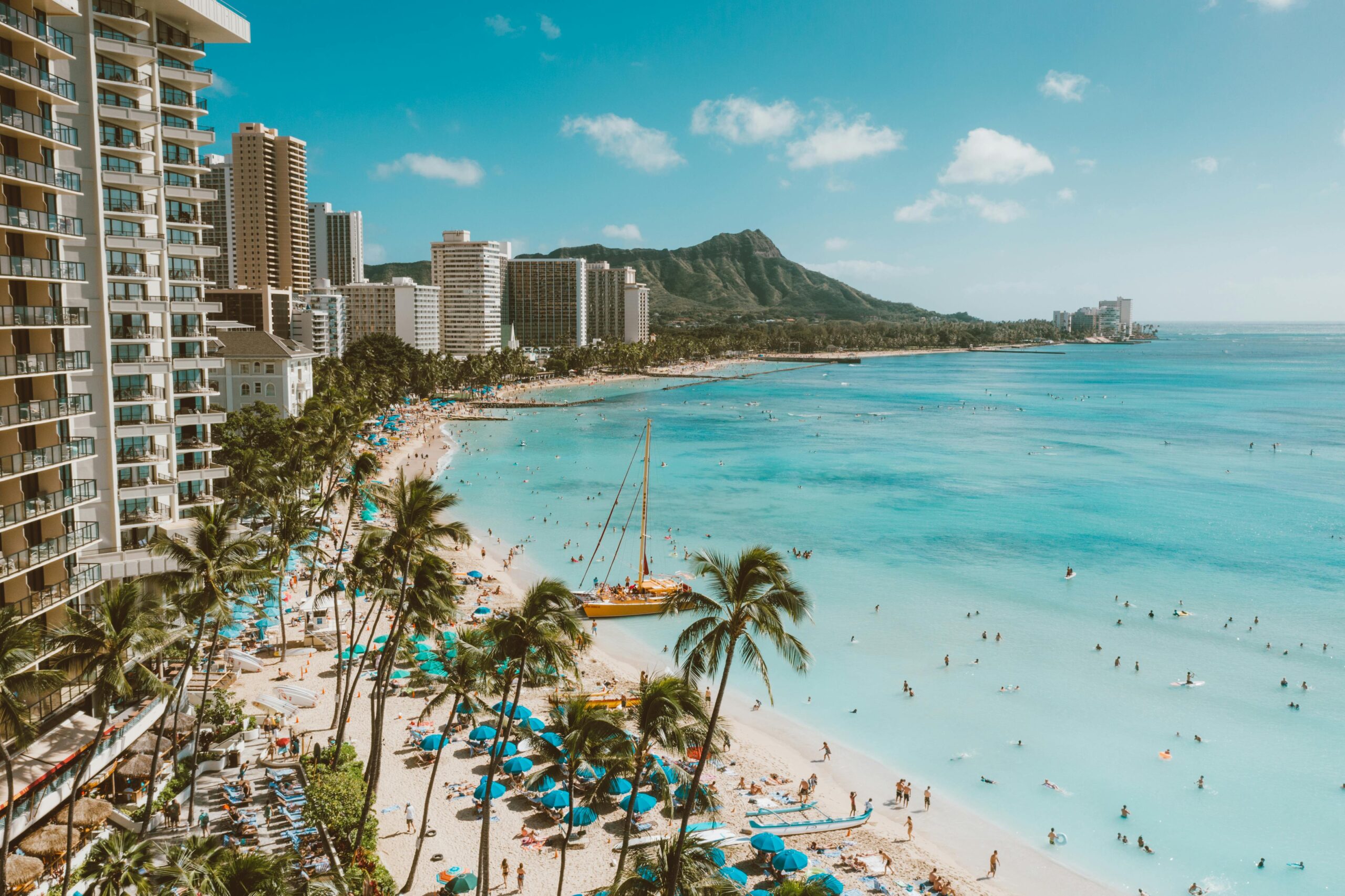After record highs in 2019, Hawaii’s visitor numbers have plateaued—and June 2025 is already showing declines compared with last year. Industry experts warn this “softer summer” could ripple through hotels, airlines, and the broader state economy unless targeted efforts reverse the trend.

A Steep Drop from Pre-Pandemic Peaks
- Historic Highs: In 2019, Hawaii surpassed 10 million annual visitors for the first time.
- Post-COVID Surge: When pandemic restrictions lifted, pent-up demand briefly overwhelmed the Islands—prompting overtourism concerns and pleas for visitor caps.
- Long-Term Decline: Visitor arrivals have yet to rebound to 2019 levels. June 2025’s daily passenger counts trail 2024’s, marking “the slowest we’ve seen in quite some time,” according to travel advisers.
Multiple Headwinds Converge
- 2023 Lahaina Wildfire Aftermath
Uncertainty over safety, coupled with sharply higher hotel rates in the wildfire’s wake, has kept many would-be visitors away. - Federal Policy Shifts
A University of Hawaii Economic Research Organization (UHERO) report forecasts a 3–6% drop in international arrivals—particularly from Japan and Canada—and projects overall visitor numbers to fall 4% over the next two years, trimming $1.6 billion from real visitor spending by 2026. Full recovery isn’t expected until about 2028. - Domestic Demand Softness
Economic uncertainty and higher living costs are prompting U.S. travelers to book later—often just two to four weeks before departure—making forecasting and marketing efforts more challenging.
Industry Voices: Hoteliers, Wholesalers, and Airlines
- Hoteliers
Executives from groups like Outrigger Hospitality note “flat” summer demand with mixed state-wide occupancy trends. Annual visitation remains well below the 2019 benchmark. - Wholesalers
Companies such as Pleasant Holidays report only island-to-island rotation—visitors shifting back to Maui late last year—but no substantial growth overall. - Airlines
Hawaiian Airlines is adding capacity—new flights from Portland to Honolulu, extra West Coast routes, and a 16% boost on its Airbus A321neo fleet—to capture last-minute bookings and leverage its merged Alaska network.

Targeted Responses to Rekindle Demand
- Maui Marketing Campaign
A $6 million initiative by the Hawaii Tourism Authority aims to spotlight Maui and encourage statewide travel. - Incentive Programs
Expanded co-op marketing with travel partners, discounted air-hotel packages, and island-hopping promotions seek to nudge hesitant travelers to book earlier. - Infrastructure Investments
Post-fire restorations, improved visitor-management systems, and sustainable tourism projects aim to reassure safety-conscious tourists. - Diversified Source Markets
Developing airlift from beyond Japan and Canada, such as South Korea and Australia, to offset traditional-market declines.
Conclusion
Hawaii’s tourism engine is in a corrective phase—shaped by disaster recovery, policy shifts, and evolving consumer habits. By combining aggressive marketing, targeted partnerships, and infrastructure upgrades, stakeholders hope to stabilize arrivals and accelerate the path back to pre-pandemic prosperity. Yet experts caution that achieving a full rebound may take several more years of concerted effort.
Frequently Asked Questions (FAQs)
Q1: How far below 2019 levels are current visitor numbers?
June 2025 arrivals are down compared to 2024, which itself hadn’t matched the 2019 total of over 10 million visitors.
Q2: What impact did the 2023 Lahaina wildfire have?
It caused both safety concerns and higher hotel rates, contributing to a sustained dip in Maui arrivals since the disaster.
Q3: When is a full tourism recovery expected?
UHERO projects a return to 2019 visitor volumes by around 2028, with interim declines in spending and employment through 2026.
Q4: Why are booking windows shorter now?
Economic uncertainty and policy changes have travelers booking closer to departure—often two to four weeks out—making demand harder to predict.
Q5: Which markets are declining most?
International visitors from Japan and Canada are down by double-digit percentages; domestic demand is also softening due to higher costs and inflation.
Q6: How are airlines adjusting?
Carriers like Hawaiian Airlines are adding flights, boosting aircraft utilization, and leveraging network synergies to capture last-minute demand.

Sources SFGATE


